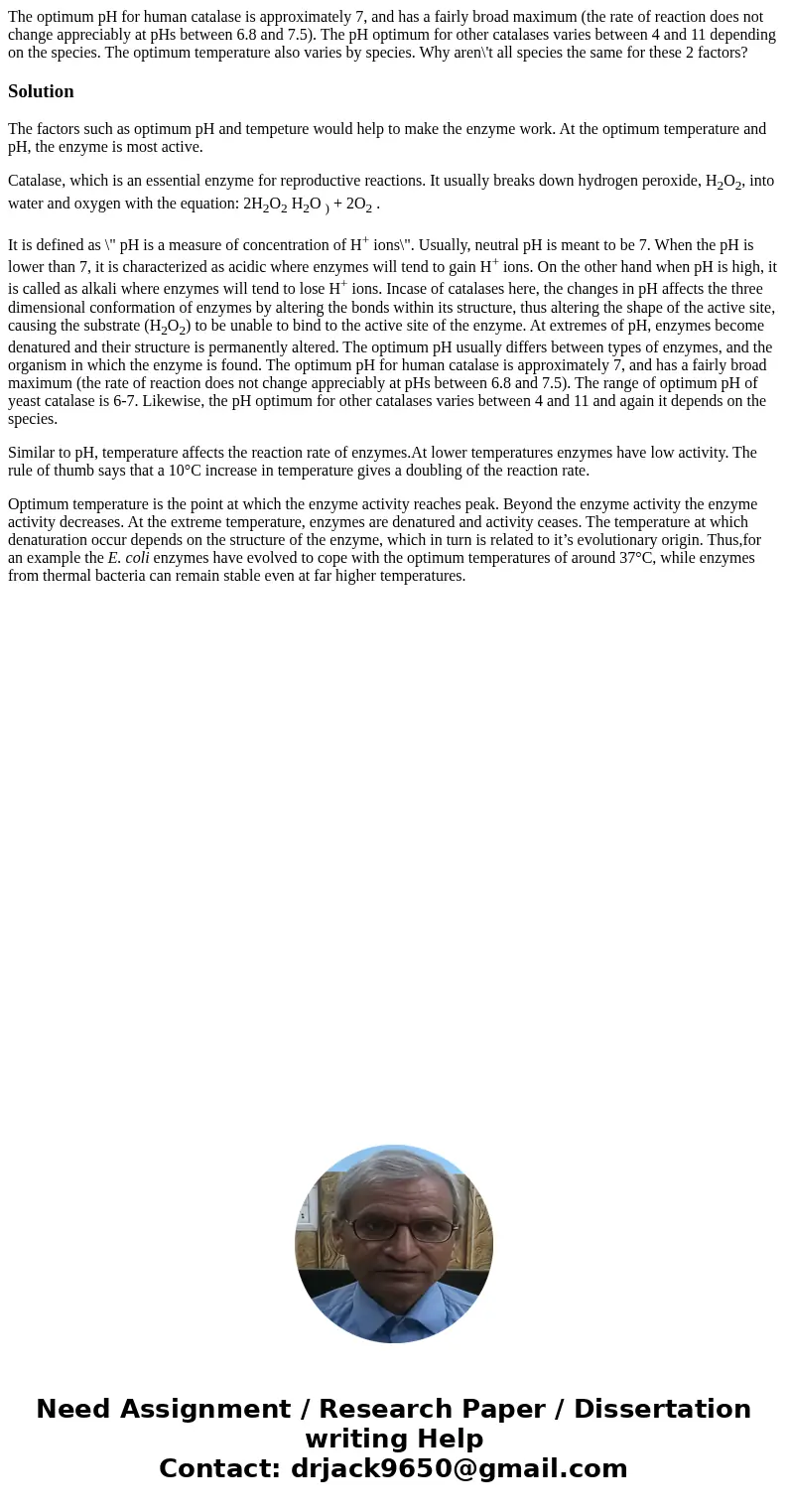The optimum pH for human catalase is approximately 7 and has
The optimum pH for human catalase is approximately 7, and has a fairly broad maximum (the rate of reaction does not change appreciably at pHs between 6.8 and 7.5). The pH optimum for other catalases varies between 4 and 11 depending on the species. The optimum temperature also varies by species. Why aren\'t all species the same for these 2 factors?
Solution
The factors such as optimum pH and tempeture would help to make the enzyme work. At the optimum temperature and pH, the enzyme is most active.
Catalase, which is an essential enzyme for reproductive reactions. It usually breaks down hydrogen peroxide, H2O2, into water and oxygen with the equation: 2H2O2 H2O ) + 2O2 .
It is defined as \" pH is a measure of concentration of H+ ions\". Usually, neutral pH is meant to be 7. When the pH is lower than 7, it is characterized as acidic where enzymes will tend to gain H+ ions. On the other hand when pH is high, it is called as alkali where enzymes will tend to lose H+ ions. Incase of catalases here, the changes in pH affects the three dimensional conformation of enzymes by altering the bonds within its structure, thus altering the shape of the active site, causing the substrate (H2O2) to be unable to bind to the active site of the enzyme. At extremes of pH, enzymes become denatured and their structure is permanently altered. The optimum pH usually differs between types of enzymes, and the organism in which the enzyme is found. The optimum pH for human catalase is approximately 7, and has a fairly broad maximum (the rate of reaction does not change appreciably at pHs between 6.8 and 7.5). The range of optimum pH of yeast catalase is 6-7. Likewise, the pH optimum for other catalases varies between 4 and 11 and again it depends on the species.
Similar to pH, temperature affects the reaction rate of enzymes.At lower temperatures enzymes have low activity. The rule of thumb says that a 10°C increase in temperature gives a doubling of the reaction rate.
Optimum temperature is the point at which the enzyme activity reaches peak. Beyond the enzyme activity the enzyme activity decreases. At the extreme temperature, enzymes are denatured and activity ceases. The temperature at which denaturation occur depends on the structure of the enzyme, which in turn is related to it’s evolutionary origin. Thus,for an example the E. coli enzymes have evolved to cope with the optimum temperatures of around 37°C, while enzymes from thermal bacteria can remain stable even at far higher temperatures.

 Homework Sourse
Homework Sourse